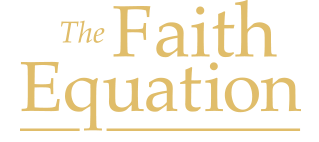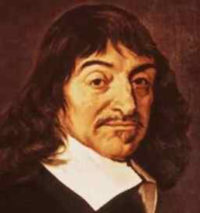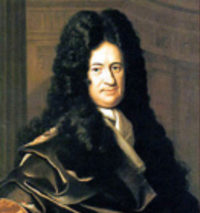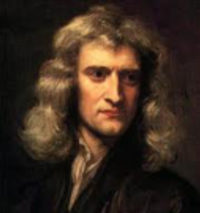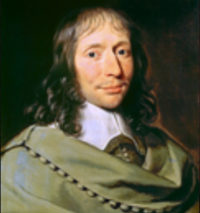1) Discuss the faith equation: Faith = (Mind) + (Heart) + (Will). Interpret it in your own life, and have each person in your group share their thoughts.
2) Discuss the meaning of the statement, “God told me that!” in your own life. Your author explained that for him such a statement means “Creative ideas coming to mind that are valid, worthwhile, and unequivocal.” Compare your interpretations to that of the author.
3) Discuss the quote: “God said to me, ‘I gave you a brain. Use it in my defense! I know I can stand the test!’ “
4) Have you ever had the thought or feeling, “I have everything under control – nothing bad can happen to me”? Did anything happen to jolt you back to reality? Share with your group.
5) Discuss the quote:
“The object of mathematics is the honor of the human spirit.”
Carl Jacobi. Professional Mathematician, 1804-1851, Potsdam, Prussia
1) Discuss the quote, “We need to admit the mind into Christian fellowship again. We need the mind disciplined in Christ, enlightened by faith, passionate for God and His creation, to be let loose in the world.” by J.P. Moreland. What reasons can your group come up with to support the quote. Think of examples in your daily life.
2) Before studying this chapter, had you ever encountered the word “apologetics”? Did you have it explained and if so how?
3) Read the article, “C. S. Lewis, George MacDonald, and Mathematics,” by David L. Neuhouser of Taylor University, on the website
http://library.taylor.edu/cslewis/mathematics.shtml
Discuss how the article connects mathematics and Christianity.
4) Look up the parallel postulate for Lobachevskian Geometry. How does it change the theorem about the sum of the angles of a triangle?
5) Look up the Biblical reference, Mark 9:23-24, using several different translations of the Bible, especially one with footnoting or commentary. A good, free, and quick source of Bible translations is www.biblegateway.com. Then discuss the translations in the context of the quote by Mark Buchanan, “Any skeptic worthy of the name is both hunter and detective, stalking the evidence, laying ambush, rummaging for clues, . . . Skeptics are passionate about finding truth out.” If this were what it means to be a true skeptic, then would you call yourself a true skeptic, and why?
6) Discuss the Emily Dickinson quote: “We both believe, and disbelieve (doubt) [question] a hundred times an hour, which keeps believing nimble.”
7) Discuss two mottos of your author, “I do believe in the Christian faith, but I must continue to ask questions, and I don’t have all the answers, but I have most of the questions.”
This Chapter is so rich in possibilities for discussion that one could literally stop and have a discussion on every page.
1) Examine the following statement from the standpoint of paradox:
“There is no absolute truth.”
2) Examine the following statement from the standpoint of paradox:
“All truth is relative.”
3) Examine the following statement from the standpoint of paradox:
“I am not arrogant!”
4) Examine the following statement from the standpoint of paradox and contradiction:
” 5/4 of all Americans can’t do fractions.”
5) Examine the following statement from the standpoint of paradox and contradiction:
“Baseball is 90% mental. The other half is physical.”
Yogi Berra
6) In an HBO TV special prior to the movie Road to Perdition, Tom Hanks makes the statement
“In good storytelling there is always great paradox, and the only time you can do that is when the audience recognizes themselves up there on the screen somehow.”
Rent or purchase the movies John Q, with Denzel Washington, Out of the Ashes, with Christine Lahti, Schindler’s List with Liam Neeson, and Road to Perdition, with Tom Hanks. Discuss Hanks quote and the role of paradox in the context of each story.
7) As you experience the media in the future stay alert for “paradox.” Note how often it arises.
8) In the set of integers, an integer is even if there exists and integer, and an integer is odd if there exists an integer to an integer x is even if there exists an integer k such that x = 2k, and an integer x is odd if there exists an integer k such that x = 2k + 1.
9) If you have a background in calculus, look up the proof by contradiction of the sentence,
There exists an real number A, such that

in a calculus book for mathematics, engineering, and science majors. Is such a real number A actually produced?
10) Look over each American Paradox listed in Chapter 2. Offer your personal suggestions for resolution.
11) Examine the following statement from the standpoint of paradox and contradiction: “A life-time achievement award is to be given to a fireman because he always distinguished himself by putting out fires. But before he got the presentation it was discovered that he had actually set the fires that he so effectively put out.” Question: Because the fires were set on his own time should it affect the award for putting them out?
12) Noted singer, actor, and comedian Bette Midler was once asked on the TV show, Inside the Actor’s Studio, if she were to look back on her career, what is the one thing you now know as an actor? She said, “You have to be realistic, but you have to be deluded. You have to know that you are the greatest thing since sliced bread, but you have to know you are not.” Categorize Midler’s statement as one of the three kinds of paradoxes of Hanson.
13) Upon completion of the chapter go back and discuss the epigraph found at the beginning of Chapter 2:
“Paradox is the foundation of all essential truth, and the capacity to embrace paradox is the key to psycho-spiritual growth, whether it be on the golf course, in the boardroom, over the stove, or even in the bedroom.”
M. Scott Peck
Discuss ways this nugget of wisdom might have had affected your life up to this time. Then, discuss ways you might use it in the future.
14) Discuss each of the paradoxes in the table in the section entitled “Paradox and Contradiction.”
15) Discuss the following from the standpoint of paradox and/or contradiction:

It is interesting, if you are an instructor, to write (d) and (e) in sequence on the board. I virtually assure you that there will be laughter in the room for (d), but very little, if any, for (e); though both are incorrect, students are just not sure.
16) Discuss each of the paradoxes in the table of the section entitled “Paradox in Christianity.” Use the scriptures as part of your discussion.
17) Discuss the quote:
“The way of paradoxes is the way of truth. To test Reality we must see it on the tight-rope. When the Verities become acrobats we can judge them.”
Oscar Wilde (1854-1900), Anglo-Irish playwright, author. Mr. Erskine, in The Picture of Dorian Gray, Ch. 3 (1891
18) The following is a discussion of the life of Ralph Branca, major-league pitcher from 1944-1956. Your author became friends with Ralph at the Adult Fantasy Baseball Camps of the Los Angeles Dodgers.
Ralph Branca is most famous to the people who do not know him for his resounding pitch to Bobby Thomson in the last game of a playoff series in 1951 between the Brooklyn Dodgers and the New York Giants. The “Shot Heard Round the World,” was a home run off Branca that culminated a seemingly miraculous comeback of the Giants from a thirteen game deficit in August to a tie at the end of the regular season. A three-game playoff series to determine the 1951 National league pennant was won by Thomson’s three-run home run in the bottom of the 9th inning to overcome a 4-2 lead of the Dodgers.
Ralph’s wife Ann, had a cousin Father Frank “Pat” Rowley, Dean of Campus Ministries at Fordham University. When Ralph got to his car after the game, the father was consoling Ann. When Ralph asked “Why me?” he said that “God gave you this cross to bear because He knew your faith would be strong enough to bear it.”
Indeed, Branca could have let this incident in a baseball game mar the rest of his life. He choose a positive response, serving others with many charitable acts among them serving on the board of directors of BAT, the Baseball Assistance Team, which aids destitute ex-major-leaguers and their families who fall on bad times after their careers are over.
Fifty years after the homerun pitch it was revealed in 2001 that for the latter part of the 1951 season the Giants had placed coach Herman Franks in their clubhouse in centerfield with a telescope for the purpose of stealing signs and signaling Giant batters of forthcoming pitches. This knowledge, in the hands of a major-league hitter, is a tremendous advantage. A debate ensued in 2001 as to whether this advantage was enough to aid the miracle comeback of the Giants. When interviewed on this issue, Branca said, “You can’t tell me that knowing those signs didn’t win them just one more game than they should have – that is all they needed to force the tie.” It is a great credit to Ralph Branca that he knew about the sign stealing for 50 years, but never revealed it or used it as an excuse until the fact was exposed by another source in 2001. Ralph Branca (1926 – 2016) was a man of outstanding character.
a) Discuss the possible paths of Branca’s life after this incident.
b) Discuss the many details of this resolution of the paradox?
c) Do you think you could have kept quiet about the sign stealing all those years?
For extensive details on the lives of Ralph Branca and Bobby Thomson and the sign-stealing incident consult the book
Prager, Joshua, The Echoing Green, New York, Pantheon Books, 2006.
1) Discuss the quote
“We cannot understand the depth of the Christian doctrine of sin if we give it only a moral connotation. To break the basic laws of justice and decency is sin indeed. Man’s freedom to honor principles is the moral dimension in his nature, and sin often appears as lawlessness. But sin has its root in something which is more than the will to break the law. The core of sin is our making ourselves the center of life, rather than accepting the Holy God as the center. Lack of trust, self-love, pride, these are three ways in which Christians have expressed the real meaning of sin. But what sin does is to make the struggle with evil meaningless. When we refuse to hold our freedom in trust and reverence for Gods will, there is nothing which can make the risk of life worth the pain of it.”
… D. D. Williams (1910-1973), Interpreting Theology
1918-1952 [1953]
2) Read one or more of the books A Paper Life, by Tatum O’Neal, Namath: A Biography by Mark Kreigel, Brother Ray: Ray Charles’ Own Story by Ray Charles and David Ritz, Joe DiMaggio: The Hero’s Life by Richard Ben Cramer, and Kate: Life of Katherine Hepburn, by Charles Higham.
a) In each book, what might have been the false selves? the authentic selves?
b) Discuss the answers in the context of this chapter.
c) How might the acceptance of Christ healed these wounded lives?
3) Read one or more of the books Prisoners of Hope, by Dayna Curry and Heather Mercer, Mother Teresa : In My Own Words by Mother Teresa, The Gulag Archipelago: 1918-1956 by Aleksandr Solzhenitsyn, and Joni by Joni Eareckson Tada, Billy Graham, and Joe Musser.
a) Look for a pattern that runs through all four books.
b) Discuss the books in context of this chapter.
c) Compare the lives of these people with those of Question 2.
4) Discuss each of the man-centered vs God-centered situations in the table of the chapter.
a) Do any apply to you?
b) Can you think of other situations?
5) Discuss some situations where you have been the recipient of grace. Then discuss some situations where you have granted grace to another human.
6) Discuss the quote:
“It’s none of your business who does and who does not go to hell. It is your business to be warned by it and to run, not walk, in the opposite direction! It is your business to love God with all your heart, soul, mind, and strength, to love your neighbor as yourself, to have confidence in Jesus Christ and live as Jesus lived. Let the imagery of hell remind you that life is serious business, that there are real consequences to how we live and believe, that justice and injustice ultimately matter more than what people worry about. Now stop speculating about hell and start living for heaven!”
Brian McLaren, A New Kind of Christian, Jossey-Bass, A Wiley
Company, San Francisco, 2001, p. 126
7) Discuss the Bible quote in the context of paradox:
Prov 11:24 “It is possible to give freely and become more wealthy, but those who are stingy will lose everything.”
For each prophecy, estimate a probability of occurrence, even though each prophecy has come true and would have probability 1.
1) Prophecy: The Messiah Will Speak in Parables.
Prediction: Psalm 78: 2-4 O my people, listen to my instructions. Open your ears to what I am saying, for I will speak to you in a parable. I will teach you hidden lessons from our past— stories we have heard and known, stories our ancestors handed down to us. We will not hide these truths from our children; we will tell the next generation about the glorious deeds of the Lord, about his power and his mighty wonders.
Fulfillment: Matt 13: 33-34 Jesus always used stories and illustrations like these when speaking to the crowds. In fact, he never spoke to them without using such parables. This fulfilled what God had spoken through the prophet: “I will speak to you in parables. I will explain things hidden since the creation of the world.
Probability = ?
Hints: How would you go about using the time principle? How many ways might a leader speak to his people? Can you think of any reasons that a non-Christian might question this prophecy?
2) Prophecy: The Messiah Will Perform Miracles
Prediction: Isaiah 35: 5-6. And when he comes, he will open the eyes of the blind and unplug the ears of the deaf. The lame will leap like a deer, and those who cannot speak will sing for joy! Springs will gush forth in the wilderness, and streams will water the wasteland.
Fulfillment: Acts 2: 22 People of Israel, listen! God publicly endorsed Jesus the Nazarene by doing powerful miracles, wonders, and signs through him, as you well know.
Probability = ?
Hints: How would you go about using the time principle? Some scientists assert that a “scientific miracle” has occurred if it an event has a probability of 0.01, or less. How might this fact be used in your estimate of the probability? Can you think of any reasons that a non-Christian might question this prophecy?
3) Prophecy: The Messiah Will Be Preceded by Someone Announcing His Coming
Prediction: Isaiah 40: 3 Listen! It’s the voice of someone shouting, “Clear the way through the wilderness for the Lord! Make a straight highway through the wasteland for our God!
Fulfillment: Matt 3: 1-3 In those days John the Baptist came to the Judean wilderness and began preaching. His message was, “Repent of your sins and turn to God, for the Kingdom of Heaven is near,” The prophet Isaiah was speaking about John when he said, “He is a voice shouting in the wilderness, ‘Prepare the way for the Lord’s coming! Clear the road for him!’ “
Probability = ?
Hints: How would you go about using the time principle? Can you think of any reasons that a non-Christian might question this prophecy?
4) The Issue of Independent Events. The website for this book, www.faithequation.com, contains a more detailed mathematical justification of whether the prophecies in this chapter can be considered independent events and as such allow the multiplication of the related probabilities. Examine and discuss the argument on the website.
5) Discuss the Biblical quote:
2 Peter 1: 20-21: “Above all, you must understand that no prophecy in Scripture ever came from the prophets themselves or because they wanted to prophesy. It was the Holy Spirit who moved the prophets to speak from God.”
1) Students and professors have contacted your author about greater mathematical depth on the mathematics of the curve fitting in this chapter. Such is provided on the website for this book www.faithequation.com. Examine and discuss the argument. If the math department at your university has research statisticians, consider having one of them come and give a talk to your group about the curve fitting. Such a talk can have applications to areas other than Christianity.
1) Depending on the statistical-medical knowledge of those in your class or group, you might want to consider one or more of the following studies and books, study them, and discuss the results. If the math department at your university has research statisticians, consider having one of them give a talk to your group about the efficacy of the studies. The same might be done if you have a medical school and/or a strong science department connected to your university.
Benson, Herbert, Jeffery A. Dusek, Jane B. Sherwood, Peter Lam, Charles F. Bethea, William Carpenter, Sidney Levitsky, et al. “Study of the Therapeutic Effects of Intercessory Prayer (STEP) in Cardiac Bypass Patients.” American Heart Journal 151 (2006): 934-942.
Byrd, Randolph C., MD, “Positive Therapeutic Effects of Intercessory Prayer in a Coronary Care Unit Population,” Southern Medical Journal, July, 1988, Vol. 81, No 7, pp.. 826-829
Harris, William S.; Gowda, Manohar; et al., “A Randomized, Controlled Trial of the Effects of Remote, Intercessory Prayer on Outcomes in Patients Admitted to the Coronary Care Unit,” Archives of Internal Medicine, Vol 159, Oct 25, 1999, pp.. 2273-2278, www.archinternmed.com.
Dossey, Larry, Healing Words – The Power of Prayer and the Practice of Medicine, Harper Mass Market Paperbacks, 1997.
McIntosh, Phyllis, “Faith is Powerful Medicine,” Remedy, November/December 1997, 120 Post Rd. West, Westport, CT 06880. reprinted in Reader’s Digest, Oct 1999, pps 151-155.
Thomas, Gary, “Doctors Who Pray,” Christianity Today, January 6, 1997.
Dillard, Dr. James, “Examining the Healing Power of Prayer,” Alternative Health, Dec 24, 1999.
Koenig, Harold, M. D., The Healing Power of Faith: Science Explores Medicine’s Last Frontier, Simon & Schuster, 1999.
O’Laire, S. “An Experimental of the effects of distant, intercessory prayer on self-esteem, anxiety, and depression,” Altern Ther Health Med., 1997; 3:38-53.
Walker, S. R., Tonigan, J. S., Miller, W. R., Corner, S., and Kahlich, L. “Intercessory Prayer in the treatment of alcohol abuse and dependence: a pilot investigation,” Altern Ther Health Med., November 1997; 3: 79-86.
Sicher, F., Targ, E., Moore, D II, Smith, H. S., “A Randomized double-blind study of the effect of distant healing in a population with advanced AIDS: report of a small-scale study,” West J Med., 1998; 169: 356-363.
Hodge, David R. “A Systematic Review of the Empirical Literature on Intercessory Prayer.” Research on Social Work Practice 17 (2007): 174-187.
2) The following study was published in The Lancet in 2005 and discussed in the chapter. Each patient who was assigned the prayer treatment received healing prayers from mixtures of prayer groups even though each group that consisted entirely of one of the various religions Christian, Muslim, Jewish, and Buddhists.
Krucoff, Mitchell W.; Crater, Suzanne W.; et al, “Music, imagery, touch, and prayer as adjuncts to interventional cardiac care: the Monitoring and Actualization of Noetic Trainings (MANTRA) II randomized study,” The Lancet, Vol 366, July 16, 2005, pps. 211-217. See also www.thelancet.com.
In the mind of your author, knowing that it may be a statement of Christian arrogance, is the possibility that this study failed to produce statistically significant differences because prayer was offered across religious boundaries. Discuss this question in your group. How might the study be redesigned to reveal more religious insight?
3) Discuss the quote:
We should always pray with as much earnestness as those who expect everything from God; we should always act with as much energy as those who expect everything from themselves.
… Charles C. Colson
4) Discuss the Biblical quote:
Philippians 4: 6: “Don’t worry about anything; instead, pray about everything. Tell God what you need and thank him for all he has done. ”
5) Discuss the quote:
“All who call on God in true faith, earnestly from the heart, will certainly be heard, and will receive what they have asked and desired, although not in the hour or the measure, or the very thing which they ask; yet they will obtain something greater and more glorious than they had dared to ask.”
Martin Luther, 1483-1546
1) The following quote is from Chapter 1 of G. K. Chesterton’s book, Orthodoxy:
To show that a faith or a philosophy is true from every standpoint would be too big an undertaking even for a much bigger book than this; it is necessary to follow one path of argument; and this is the path that I here propose to follow. I wish to set forth my faith as particularly answering this double spiritual need, the need for that mixture of the familiar and the unfamiliar which Christendom has rightly named romance. For the very word “romance” has in it the mystery and ancient meaning of Rome. Any one setting out to dispute anything ought always to begin by saying what he does not dispute. Beyond stating what he proposes to prove he should always state what he does not propose to prove. The thing I do not propose to prove, the thing I propose to take as common ground between myself and any average reader, is this desirability of an active and imaginative life, picturesque and full of a poetical curiosity, a life such as western man at any rate always seems to have desired. If a man says that extinction is better than existence or blank existence better than variety and adventure, then he is not one of the ordinary people to whom I am talking. If a man prefers nothing I can give him nothing. But nearly all people I have ever met in this western society in which I live would agree to the general proposition that we need this life of practical romance; the combination of something that is strange with something that is secure. We need so to view the world as to combine an idea of wonder and an idea of welcome. We need to be happy in this wonderland without once being merely comfortable. It is this achievement of my creed that I shall chiefly pursue in these pages.
a) How is the notion of paradox inherent in this quote?
b) A mathematician and/or scientist gets so used to working with formulas, abstract symbolism, and quantitative entities that the notion of using metaphor and imagination in working with the higher dimension concepts can make for quite a change in thinking. But, in fact, imagination plays an important role in posing theorems to be proved in mathematics or hypotheses to be researched in science. Discuss this change in thinking in the context of the Chesterton quote.
The entire book, Orthodoxy, is available for free on the website
http://www.leaderu.com/cyber/books/orthodoxy/orthodoxy.html.
2) Read the article, “Higher Dimensions and the Writings of C. S. Lewis,” by David L. Neuhouser of Taylor University, on the website
https://library.taylor.edu/dotAsset/9bfa4539-cbf0-409f-bcfc-3752a902bff1.pdf
Discuss how the article connects mathematics, higher dimensions, and Christianity.
3) Ask each person in your group to make a list of what he/she thinks heaven might be like. Then move around the room and share your lists.
4) In recent years, music videos have become quite popular. Discuss why by considering dimensions. Speculate what might this nth dimension might suggest about the (n + 1)st dimension.
5) Between sessions of your group ask the members to view the recent film Cinderella Man. Then the next time you meet discuss how this true story might be improved if it had a Christ-like or God-like consciousness.
6) Compare a seed with a flower it produces when it grows. Discuss how inadequate the seed is to produce the flower. Then discuss butterflies, and finally Christ’s parable of the mustard seed.
7) In a recent book, Rumors of Another World, Philip Yancey refers to the natural world (the nth dimension) providing “rumors” of the supernatural world, the (n+1)st dimension, saying, “I began to listen to my own longings as rumors of another world, a bright clue to the nature of the Creator. … Nature and supernature are not two separate worlds, but different expressions of the same reality. … My natural desires, I now see, are pointers to the supernatural, not obstacles. In a world fallen far from its original design, God wants us to receive them as gifts and not possessions, tokens of love and not love in themselves. … rumors of another world are just that, rumors, and not proofs. … It takes the mystery of faith, always, to believe, for God has no apparent interest in compelling belief.” Yancey, Philip, Rumors of Another World, 2003, Zondervan, Grand Rapids, MI, p. 36-41.
Discuss this quote in the context of Chapter 7. Then consider Yancey’s book as adjunct reading to this chapter.
8) Between sessions of your group ask each member to do some reading on the heads or statues that mysteriously appear on Easter Island. The next time the group meets, discuss their findings. Then consider how such findings might suggest extraterrestrial or supernatural involvement, and then how this might lead to a discussion of an intelligent designer, God.
9) Have someone bring a copy of Hugh Ross’s book The Creator and the Cosmos, or some other book that gives a detailed list of the physical constants that can vary so little and still allow life exist on earth. Discuss several of these constants. Does the discussion lead the group to firmer faith in the existence of an intelligent designer, God?
10) Arguably the greatest Christian author of the 20th century, Clive Staples Lewis (1898-1963), has had enormous impact on the theological thinking of your author. Lewis wrote an article called “Transposition,” which was part of a book entitled The Weight of Glory, in which he used notions of higher dimensions as a metaphor for spiritual thinking.
a) Have the group (or one member) read the short article and then discuss it in the context of Chapter 7.
Lewis, C. S., “Transposition,” The Weight of Glory, Harper Collins, 2001, pp. 100-115. Copyright ©, 1949, C. S. Lewis Pte. Ltd.
b) How might Lewis have displayed the imagination of a mathematician?
11) At the end of Chapter 7, your author describes how each day in heaven might consist of God revealing another dimension of His glory. Discuss this notion in your group. What other dimensions would each member like revealed?
12) This chapter has developed the idea that the nth dimension offers only hints or footprints of the (n+1)st dimension. These footprints offer evidence of the existence of God and/or heaven. In your group, use the idea that the nth dimension offers only hints or footprints of the (n+1)st dimension to debate the issue of the existence of Satan, Lucifer, the Devil and/or hell. Wear the shoe on the other foot, and consider the evidence of the existence of Satan and hell, even though as a spirit, Satan cannot be touched or measured.
1) In what way is becoming a follower of Christ like forming a tesseract?
2) Take a series of small objects, such as a grain of sand, a tiny cube, a child’s block, and even a larger rectangular block to your group. For those of you who are math teachers you may have a series of cubes, lines, planes, and a larger cube used for teaching place value that would serve the purpose. Then trace through the development of point, line, plane, then hyperpoint, hyperline, and hyperplane; and so on. Discuss whether this gives the group a better spatial sense of higher dimensions.
3) Take a tub of water and some kind of “flatwater” objects like the geometrical shapes discussed in the chapter, or plastic cutouts of people to your group. Discuss how they would look on the surface of the water. Then take some solids, and discuss how they would look as they entered the water, presuming you were a flatwater person. Make a comparison to your concept of God.
4) Recall that the creature ET from the movie ET: The ExtraTerrestial, had only three fingers on each of his hands. How could ET’s hand be used as a model for the trinity?
5) Try to think as a group of other situations in the Bible that suggest something appearing from the 4th dimension.
6) Discuss the quote:
“There is a fifth dimension beyond that which is known to man. It is a dimension as vast as space and as timeless as infinity . It is the middle ground between light and shadow; between science and superstition and it lies between the pit of man’s fears and the summit of his knowledge. This is the dimension of imagination. It is an area which we call The Twilight Zone.”
Rod Serling, Opening lines of his TV series The Twilight Zone
7) Discuss the quote:
“If God did not exist, it would be necessary to invent him.” Voltaire
1) Discuss why the notion of integrating one’s profession and faith can be worthwhile to yourselves and to the world.
2) Discuss the age of earth. Whether the earth is 10-15 billion years old (old-earth opinion) or 5-6 thousand years old (young-earth opinion) is subject to debate in scientific and theological circles. Have each person in your group do some research on the subject. Then next time report and discuss your findings. Discuss how this might be important to your Christian worldview.
3) Googol. Edward Kasner, 1878-1955, a famous research mathematician, once asked his young nephew to invent a name for a very large number. The boy called it a googol, and Kasner defined googol in decimal notation as a 1 followed by 100 zeros; that is, a googol is . Kasner went on to, define a googolplex, as
or
. In the British version of the TV show, “Who Wants to Be a Millionaire?” a million-pound question involved the definition of a googol. It was answered correctly. How is a googol related to the Big Bang?
4) Discuss Fig 9.9 in terms of paradox. What are the consequences of the foundation and apex concepts as paradoxes? Do you think that matter could ever be composed of something smaller than strings? Why?
5) Discuss whether there might be other tough questions of Christian theology that might framed in the context of higher dimensions. Describe them.
6) In Rev 21: 5-8, God refers to Himself as “the Alpha and the Omega.” What does this statement imply about the possibility of a Big Crunch?
7) Discuss these quotes:
“God judged it better to bring good out of evil than to suffer no evil at all.”
Saint Augustine, Enchiridon, 27, as quoted in The Book of Catholic Quotations, ed. John Chapin (New York: Farrar, Strauss, and Cudahy, 1956), 313.
“God is so good that He can direct an evil to a good end.”
St. Thomas Aquinas
“We cannot learn without pain.”
Aristotle
1) Do the Exercises at the end of the chapter, and discuss them in your group.
2) Examine the measurements of the ends of some bricks. How close does their ratio come to the Golden Ratio?
1. The book Incompleteness: The Proof and Paradox of Kurt Gödel, by Rebecca Goldstein traces the life of Kurt Gödel and compares it to Albert Einstein, a friend and associate at Princeton University. It also outlines a fairly accessible account of the proof of Gödel’s Incompleteness Theorem. Consider reading it for insights into Gödel’s life and famous theorem.
1) See the following movies: Million-Dollar Baby, The Pianist, The Magnificent Seven, Schindler’s List, Saving Private Ryan, High Noon, Braveheart, and Top Gun. Look for a common thread that runs through these films. What faith axiom relates to this thread?
